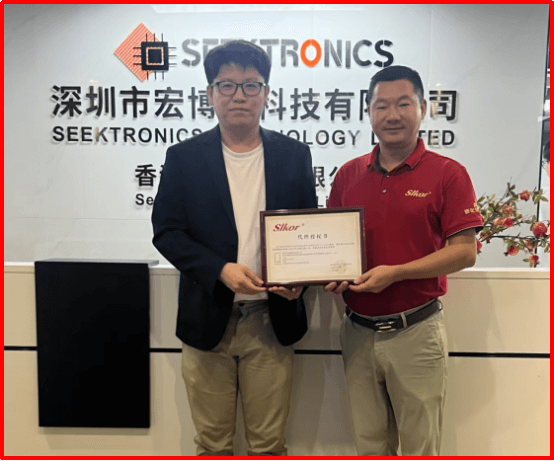Vietnam’s Leap into Semiconductor Innovation
Vietnam has marked a significant milestone in its technological journey with the official launch of its first domestically designed Internet of Things (IoT) chip. Developed by CT Group, a diversified Vietnamese conglomerate, this achievement signals the country’s growing ambition to build a robust, self-reliant semiconductor industry. The chip, engineered by a team of Vietnamese experts, was unveiled in Ho Chi Minh City on June 29, 2025, during CT Group’s 33rd anniversary celebration. This event not only showcased technological prowess but also underscored Vietnam’s strategic focus on high-tech development and industrial modernization.
- Vietnam’s Leap into Semiconductor Innovation
- What Makes the CT Group IoT Chip Special?
- CT Group’s Strategy: From Fabless Design to Full Value Chain Integration
- National Policy and the Drive for Technological Sovereignty
- Market Impact and Strategic Applications
- Education, Talent, and International Collaboration
- Symbolic and Strategic Significance
- In Summary
What Makes the CT Group IoT Chip Special?
The newly launched IoT chip is based on advanced CMOS (Complementary Metal-Oxide-Semiconductor) and III/V semiconductor technologies. These technologies are foundational in modern electronics, enabling the creation of high-performance, energy-efficient chips used in a wide range of applications. The chip is designed for use in sectors such as unmanned aerial vehicles (UAVs), smart devices, telecommunications, and defense, reflecting its versatility and strategic importance.
CT Group’s approach is notable for its emphasis on developing proprietary intellectual property (IP) cores. These include critical modules such as Analog-to-Digital Converters (ADC), Digital-to-Analog Converters (DAC), signal processors, and neural processing units (NPUs). By focusing on these building blocks, CT Group aims to reduce reliance on imported technologies and move toward full design autonomy—a crucial step for any nation aspiring to technological self-sufficiency.
Understanding the Technology: CMOS and III/V Semiconductors
CMOS technology is the backbone of most modern integrated circuits, prized for its low power consumption and scalability. III/V semiconductors, made from elements in groups III and V of the periodic table (such as gallium arsenide), offer superior electron mobility, making them ideal for high-speed and high-frequency applications. The combination of these technologies allows for the creation of chips that are both powerful and efficient, suitable for demanding applications in AI, telecommunications, and defense.
The Role of ADC and DAC Modules
ADC and DAC modules are essential for interfacing digital systems with the analog world. ADCs convert analog signals (like sound, temperature, or light) into digital data that computers and chips can process. DACs perform the reverse, transforming digital data back into analog signals to control devices such as speakers or motors. These converters are critical in industries ranging from healthcare and automotive to defense and smart agriculture.
CT Group’s Strategy: From Fabless Design to Full Value Chain Integration
Currently, CT Group operates under a fabless model, meaning it designs chips locally but outsources manufacturing to specialized foundries abroad. This approach is common among emerging semiconductor companies, as building and operating fabrication plants (fabs) requires massive capital investment and technical expertise. However, CT Group has set its sights on mastering the entire semiconductor value chain by 2030.
The company is investing in the development of photolithography capabilities—a critical and complex process in chip manufacturing that involves transferring circuit patterns onto silicon wafers. CT Group has proposed public-private collaboration to build photolithography infrastructure in Vietnam, aiming to eventually handle design, photolithography, assembly, packaging, and testing domestically. This vertical integration would not only enhance supply chain security but also position Vietnam as a competitive player in the global semiconductor market.
Building Infrastructure and Talent
To support its ambitions, CT Group’s semiconductor arm, CT Semiconductor, is constructing three assembly, testing, and packaging (ATP) plants—two in southern Vietnam and one in the north. Additionally, two research and development (R&D) centers are being established in Ho Chi Minh City and Hanoi. The company is also setting up customer care centers in Silicon Valley and Phoenix, USA, to facilitate global collaboration and market access.
Recognizing the importance of human capital, CT Group collaborates with leading Vietnamese universities, such as the University of Technology (VNUHCM) and Can Tho University, as well as international experts and members of the Vietnamese diaspora. These partnerships aim to develop a skilled workforce capable of supporting the long-term growth of Vietnam’s semiconductor sector.
National Policy and the Drive for Technological Sovereignty
The launch of the IoT chip aligns with Vietnam’s broader national strategy to develop its semiconductor industry. The government has identified semiconductors as a strategic sector, essential for economic modernization, digital transformation, and national security. Recent policies, such as Resolution No. 57-NQ/TW, emphasize breakthroughs in science, technology, and innovation, with a focus on building domestic capacity and reducing dependence on foreign technology.
Vietnam’s leadership has enacted foundational laws and decrees to support science, technology, and innovation, including special incentives for data-driven research and the attraction of overseas Vietnamese and foreign experts. The government’s goal is to train 50,000 semiconductor engineers by 2030, fostering a robust ecosystem of research centers, high-tech enterprises, and innovation hubs.
Resolution 57: Accelerating Innovation
CT Group’s achievements are often cited as a model for implementing Resolution 57. The company’s rapid development of an ADC chip in just six months—compared to the typical two-year timeline—demonstrates the power of focused policy and institutional support. Tran Kim Chung, Chairman of CT Group, highlighted the motivational impact of Resolution 57:
“For the first time, we’ve launched the ADC chip design, a chip of great importance for Vietnam in the spirit of Resolution 57. Typically, this chip would take two years to complete, but we tried and reduced it to just six months to meet the spirit of Resolution 57. That’s precisely the power of Resolution 57, which has made everyone excited.”
This spirit of innovation is further reinforced by the government’s commitment to building a data-driven, digitally transformed society, with special mechanisms to attract and retain top talent in critical fields like AI and semiconductors.
Market Impact and Strategic Applications
The CT Group IoT chip is expected to serve both internal and external markets. Internally, it will power the group’s technology ecosystem, including AI cameras, smart energy modules, and sensor devices used in smart city projects. Externally, the chip is targeted at sectors such as defense, public security, telecommunications, and UAVs, where secure and reliable domestic supply is crucial.
CT Group’s leadership in the UAV sector provides a ready-made application and testing ground for its chips. The company’s smart city ecosystem, which integrates AI-powered monitoring systems, energy control modules, and next-generation sensors, further amplifies demand for advanced semiconductor solutions.
Vietnam’s Broader Semiconductor Ecosystem
Vietnam’s semiconductor industry has been gaining momentum, attracting major global players like Intel and onsemi, which have established advanced packaging and R&D centers in the country. The government’s national strategy aims to position Vietnam as a key player in the global semiconductor supply chain, leveraging its young workforce, strategic location, and growing technical expertise.
Despite these advances, challenges remain. Vietnam faces a shortage of highly skilled engineers, infrastructure limitations, and stiff competition from established chipmaking hubs like Taiwan and South Korea. However, the commitment of companies like CT Group, combined with strong government support, is gradually overcoming these hurdles.
Education, Talent, and International Collaboration
Developing a world-class semiconductor industry requires more than just technology—it demands a continuous pipeline of skilled engineers and researchers. CT Group has taken proactive steps to address this need by partnering with universities and launching training programs for chip design and ATP technicians. The company has also initiated programs to attract young talent, offering competitive salaries and incentives for outstanding students.
International collaboration is another cornerstone of CT Group’s strategy. By working with overseas Vietnamese experts and global partners, the company is able to access cutting-edge knowledge and best practices. This approach not only accelerates technology transfer but also helps Vietnam integrate into the global innovation ecosystem.
Innovation Hubs and Ecosystem Development
CT Group’s CT Innovation Hub 4.0 serves as a comprehensive ecosystem for research, development, and commercialization of high-tech products. The hub connects researchers, entrepreneurs, and industry partners, fostering a culture of creativity and collaboration. Within just two months of operation, the center has welcomed over 100 delegations, spreading the spirit of innovation and serving as a bridge between academia and industry.
Symbolic and Strategic Significance
The launch of the IoT chip is more than a technical achievement—it is a symbol of Vietnam’s aspirations for technological sovereignty and global competitiveness. CT Group has proposed designating April 30 as “Vietnam Semiconductor Day” to highlight the national importance of the sector and to inspire unity and pride in the country’s technological progress.
Vietnam’s journey mirrors the experiences of other Asian nations, such as Malaysia and Singapore, which have successfully built globally competitive semiconductor industries through sustained investment, talent development, and international cooperation. By learning from these examples and leveraging its own strengths, Vietnam is positioning itself for a future where it is not just a consumer but a creator of advanced technologies.
In Summary
- CT Group has launched Vietnam’s first domestically designed IoT chip, marking a major milestone in the nation’s semiconductor ambitions.
- The chip uses advanced CMOS and III/V semiconductor technologies and is intended for applications in UAVs, smart devices, telecommunications, and defense.
- CT Group is building a comprehensive semiconductor ecosystem, including design centers, ATP plants, and R&D hubs, with the goal of achieving full value chain integration by 2030.
- The company is investing in talent development through partnerships with universities and international experts, addressing the critical need for skilled engineers.
- The launch aligns with Vietnam’s national strategy to develop a self-reliant, innovative high-tech sector, supported by government policies and incentives.
- CT Group’s achievements serve as a model for implementing Resolution 57, demonstrating the power of focused policy and institutional support in accelerating innovation.
- The IoT chip is expected to serve both internal and external markets, with strategic applications in smart cities, defense, and public security.
- Vietnam faces challenges such as talent shortages and infrastructure gaps but is making steady progress through strong public-private collaboration and international partnerships.
- The proposal to designate April 30 as “Vietnam Semiconductor Day” underscores the symbolic and strategic importance of the sector for the nation’s future.












